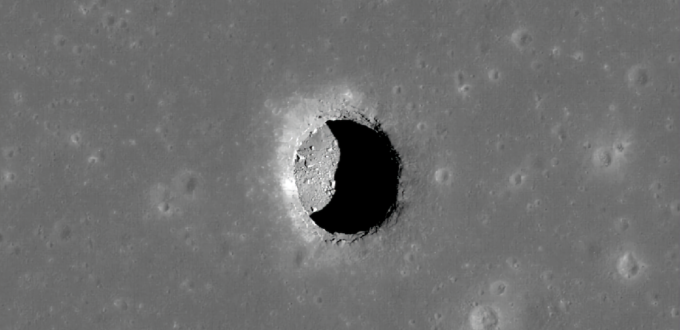Human explorers in the future on the moon may have 99 problems but still warm or cool will not be one. A team led by Planet scientists at UCLA has found a shady location in a hole in the moon that always floated around 63 degrees of comfortable Fahrenheit.
Holes, and caves that they can lead, will make a safer and more stable base camp for the exploration of the moon and long-term residence than the surface of other moons, which heats up to 260 degrees during the day and drops to 280 degrees in under zero at night.
The first hole was discovered in the month in 2009, and since then, scientists have asked whether they lead to caves that can be explored or used as a shelter. About 16 out of more than 200 holes may be a collapsed lava tube, said Tyler Horvath, a Doctoral UCLA student at Planetary Science, who led a new research. The two most prominent holes have obviously visible overhangs leading to a kind of cave or canceled, and there is strong evidence that other people’s overhangs can also lead to large caves.
The lava tube, also found on earth, forms when liquid lava flows under cold lava fields or crust formed above the lava river, leaving a long and hollow tunnel. If the ceiling of the compacted lava tube collapsed, it opens a hole that can lead to the remaining cavelike tube.
Horvath processes images from the Lunar Diviner radiometer experiment – thermal cameras and one of the six instruments in the sacrifice of the NASA robot reconnaissance – to find out whether the temperature in the hole deviates from the surface.
Focusing on 100 meters-twit-cylinder depression which is about the length and width of the soccer field in the moon area known as the cranquillitatis female horse, horvath and its colleagues use a computer modeling to analyze the thermal properties of rocks and moon dust and to map the temperature holes for a certain period of time.
As a result, the new -new published in the journal Geophysical Research Letters, revealed that the temperature in the range of pit that is overshadowed permanently only a little fluctuating throughout the day of the month, remains around 63 degrees. If a cave extends from the bottom of the hole, as suggested by an image taken by a lunar surveillance camera, it will also have a relatively comfortable temperature.
The research team, who also included Planet Science Professor Ucla David Paige and Paul Hayne from the University of Colorado Boulder, believed that the shadow’s overhang was responsible for a solid temperature, limiting how hot the things occurred during the day and prevent heat emanating from going at the time Stay away to emanate the night. Meanwhile, the sunlight from the hole floor touches the daytime temperature close to 300 degrees, about 40 degrees hotter than the surface of the moon.
Because tranquilitatis holes are the closest to the equator, the floor illuminated during the day may be the hottest place throughout the month,” Horvath said.
One day on the moon lasts almost 15 days of the earth, where the surface continues to be bombarded by sunlight and is often hot enough to boil water. A very cold night also lasts about 15 days of the earth. Creating heating and cooling equipment that can operate in this condition and produce sufficient energy to provide nonstop power can prove an unresolved barrier for exploration or moon residence. Solar power – the most common form of NASA power plant – not functioning at night. (NASA currently has no plans to establish an exploration base camp or residence on the moon.)
Building a base in the shadow parts of these holes allows scientists to focus on other challenges, such as planting food, providing oxygen for astronauts, gathering resources for experiments and expanding the base. Hole or cave will also offer protection from cosmic rays, solar radiation and micrometeorite.
Diviner has mapped the moon continuously since 2009, producing NASA’s second largest dataset and provided the most detailed and comprehensive thermal measurements of any object in our solar system, including the earth. The current team work in Lunar PITS has increased data from Diviner experiments.
Because no one else seeing things like this small with fortune tellers, we found that it had a little double vision, causing all our maps to be a little blurry,” Horvath said. The team works to harmonize many images taken by the instrument until they can reach accurate thermal reading to a single pixel level. This process produces a resolution map that is much higher than the surface of the moon.
Data from the initial stage of the thermal modeling project this month is used to help develop the thermal Rover management system for the mission of the moon diver proposed by NASA. Horvath and Hayne are part of the Science Team for this mission, which aims to have Rapel Rover into the tranquilitatis hole to examine the layers of lava flows seen on the walls and to explore the existing cave.
Horvath and Paige are members of the Science Team for the thermal Camera bound by the new moon led by Paul Hayne named L-Ciris, who will head to the South Pole Lunar at the end of 2023 to get the first thermal land-based image.


No Comments Yet